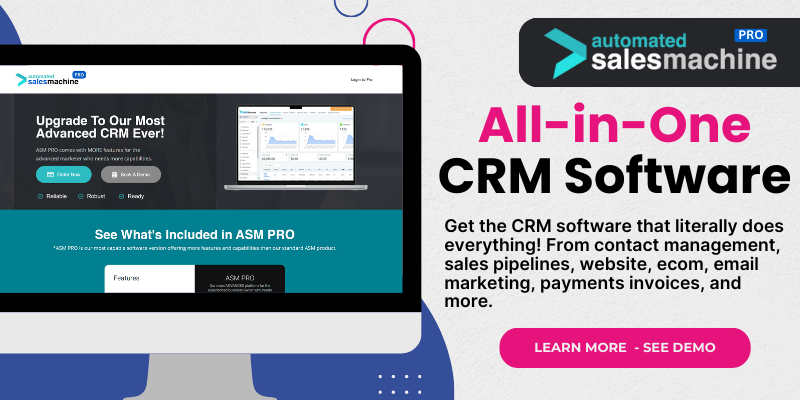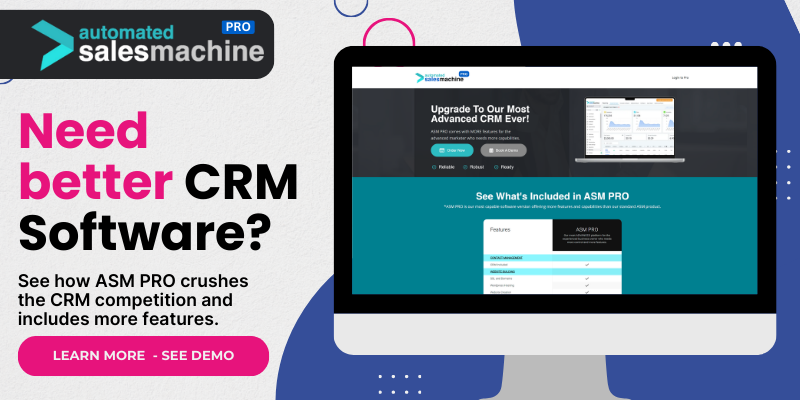Enhanced Efficiency
Streamlining Processes
Let’s face it, when I first started working with CRM systems, managing numerous tasks felt like juggling flaming swords. But once I implemented workflow automation, everything changed. The process of setting up automated workflows allows me to streamline repetitive tasks, turning what used to take hours into mere minutes. By automating follow-up emails or task assignments, I could finally focus on what truly matters—building relationships.
Not only do these automated processes save time, but they also reduce the likelihood of errors. Let’s say you have a sales task that requires sending out information to potential customers. By creating a workflow, I can ensure that every prospect receives the correct information without worrying about human error. This precision means I can maintain my credibility and make my customers feel valued.
Moreover, enhancing efficiency through automation builds momentum in my work environment. When I’m able to delegate tasks to my CRM, I can prioritize high-impact projects, leading to a more productive atmosphere. It encourages team members to elevate their own performance, causing a ripple effect of productivity across the board.
Improved Data Management
Centralizing Information
When I started out, managing customer data felt chaotic—like trying to find a needle in a haystack. But once workflow automation became a part of my daily routine, I realized the true power of centralized information. With all customer data available in one spot, I can easily access the insights I need to make informed decisions. It’s like having a trusty roadmap guiding me through my customer relationships.
Data organization is critical, especially in a world flooded with information. With automated workflows, I can set triggers that automatically categorize and update customer profiles based on their interactions. Not only does this save me from manual data entry, but it also ensures that I’m working with the latest customer information, which is key to effective communication.
Centralizing my data also facilitates collaboration within my team. By having the same access to customer information, every team member is on the same page and can contribute to the sales process more effectively. This collaborative approach creates a harmonious workspace where we are all rooting for each other’s success.
Better Tracking and Reporting
Analytics Made Simple
If there’s one thing I love about workflow automation, it’s the tangible data I can pull for tracking performance. Gone are the days of manually sifting through spreadsheets trying to gather information for reports. Automation allows me to set up reports that are generated automatically, saving me time and ensuring accuracy. It’s almost like having my personal data assistant!
With better tracking comes deeper insights into my business processes. I can easily see where bottlenecks occur, how leads are progressing through the sales funnel, and which campaigns yield the best results. This data-driven approach empowers me to refine my strategies based on what works, ultimately leading to better outcomes.
But the magic doesn’t stop there! Sharing these insights with the team is a breeze. The ability to generate real-time reports not only keeps everyone informed but also promotes a culture of accountability. We celebrate the wins together and address roadblocks collaboratively, leading to continuous improvement and shared success.
Increased Customer Satisfaction
Timely Responses
When I think about customer satisfaction, my mind immediately shifts to the importance of timely responses. Automating workflows means I can set up triggers that send welcome emails or follow-ups right after customer interactions. This promptness demonstrates our commitment to serving them, and honestly, it enhances their overall experience.
The power of personalization shouldn’t be underestimated either. By utilizing customer data and automated workflows, I can send tailored messages that resonate with individual customers. This level of attention makes them feel valued, and as a result, they’re more likely to engage further with our brand.
All in all, happy customers are usually repeat customers. With automation facilitating their journey, I find that we not only retain clients but gain more brand advocates. It’s that word-of-mouth magic that pays dividends in the long run.
Cost Reduction
Minimizing Labor Costs
One of the best parts about workflow automation is the cost savings it brings to the table. By automating routine tasks, we can allocate our human resources to more strategic initiatives. This ensures our team is working smart rather than hard, and it reduces the need for excess hiring, which directly cuts costs.
Plus, with less manual intervention in daily tasks, the likelihood of errors decreases significantly. This reduction in errors translates to fewer resources spent on corrections, which means savings across the board. The bottom line? Investing in workflow automation genuinely pays off in the long run.
And it isn’t just about saving money in the short term. It’s about building a sustainable strategy for future growth. The efficiencies gained through automation lay the groundwork for scaling operations without proportionally increasing costs—now that’s something I can get behind!
Scalability
Adapting to Growth
As someone who has seen businesses grow, I can attest to the importance of scalability. One of the chief benefits of workflow automation is its ability to grow with your business. As new challenges and demands arise, automated systems can manage increased workloads without breaking a sweat.
Moreover, the flexibility of automating workflows allows for quick and effective changes to be implemented. Whether adding a new product line or adjusting marketing strategies, I find that my automated processes can adapt effortlessly to align with our evolving needs. This agility is vital in today’s fast-paced business environment.
When I reflect on successful companies I’ve observed, a key factor has been their ability to scale without losing touch with their customers. Workflow automation supports that balance, enabling workflows to handle more customer interactions while continuing to provide the personal touch that matters.
Frequently Asked Questions
1. What is workflow automation in CRM?
Workflow automation in CRM refers to using technology to perform repetitive tasks automatically. This can include automating email responses, data entry, and task assignments, ultimately streamlining processes and improving efficiency.
2. How does workflow automation improve customer satisfaction?
By allowing timely responses and personalized communications, workflow automation ensures that customers feel valued and attended to, leading to higher satisfaction and loyalty.
3. Can workflow automation reduce costs?
Absolutely! Automating tasks minimizes labor costs, reduces errors, and saves time, all contributing to a more cost-effective business model.
4. Is workflow automation scalable?
Yes, one of the standout features of workflow automation is its scalability. As your business needs evolve, automated systems can easily adapt to manage increased workloads without the need for substantial changes.
5. What are some common tasks that can be automated in a CRM?
Common tasks include email marketing, lead tracking, data entry, task assignments, and follow-up management. Automation of these processes helps streamline workflow and improves overall productivity.

